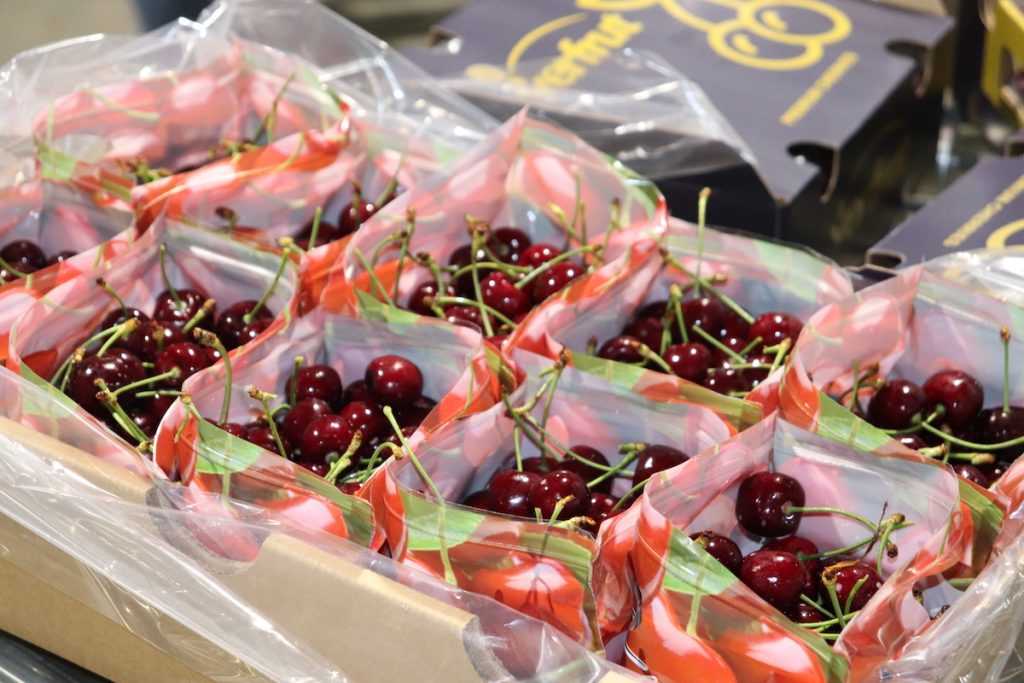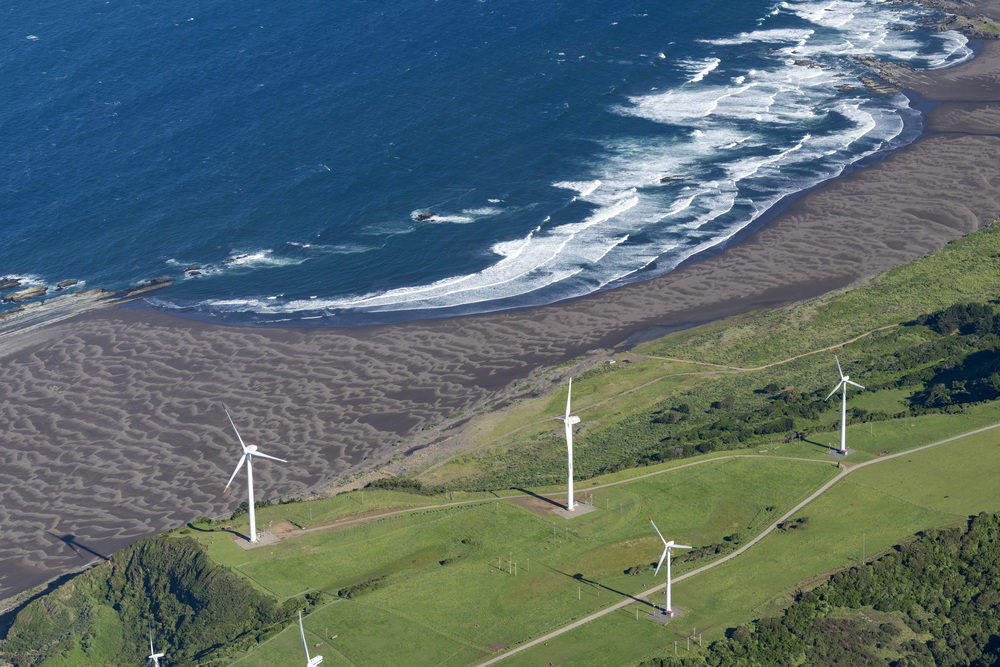
This coming February 10 is the Chinese New Year, an event that involves a series of activities, as well as a long vacation period, in which many take the opportunity to visit their families and friends in other cities, where Chilean cherries are the great guests to share, give gifts and also express good wishes for the coming year.
In this context, Frutas de Chile and its Cherry Committee, together with Fundación Imagen de Chile, organized a visit of Chinese media to present the export process of cherries, as well as the high technology and the commitment to sustainability of the Chilean fruit industry.
"We believe that this joint work is key to positioning the image of Chile and its fruits in the world, especially in China, the main market in Asia for our exports, the main market for our cherries and the second market in terms of volume globally." Iván Marambio, President of Frutas de Chile.
On the occasion, they visited Verfrut's facilities, especially due to the interest aroused by the recent inauguration of its floating photovoltaic plant in the Quilamuta estate in the O'Higgins Region, which is one of the largest in the southern cone, and thanks to which energy is supplied for a large part of the production process, such as irrigation, and export of the plant (packing). They were also able to see the shipment of cherries in one of the Cherry Express at San Antonio Terminal Internacional de Puerto de San Antonio (STI).
The activity was led by the president of Frutas de Chile, Iván Marambio, and the executive director of the Cherry Committee, Claudia Soler, just days before they travel to fulfill an intense agenda of activities in China, Chinese Taipei and South Korea. "We spent a whole day accompanying an important group of Chinese media, with offices in Chile, in an activity that was organized by Fundación Imágen de Chile, and coordinated by Frutas de Chile. We believe that this joint work is key to positioning the image of Chile and its fruits in the world, especially in China, the main market in Asia for our exports, the main market for our cherries and the second largest market in terms of volume globally," commented Marambio.
Claudia Soler commented: "We are very expectant about what this season will be like, as it has had a somewhat difficult start due to the weather conditions that affected our country and somehow affected the production of the earliest varieties and also delayed our harvest. The peak weeks were week 51 and 52, therefore, we should expect the largest volumes of cherry exports to arrive mainly in China from January 15, where we will implement more strongly the actions of our promotional campaign, because although we have already started with our campaign, we have not yet reached the highest volumes, where the largest activations are made in retail, online platforms, wholesale markets, specialty stores and other various areas to cover with our actions".
The professional added that to date more than 300,000 tons have been exported with a drop of almost 20%, but by the end of the month the figure should be higher and better reflect the season. "We are in a season that is 10 days to 2 weeks late, therefore, we should expect this drop to decrease," he said.
Visit to Cherry Plant
The tour began at Verfrut's facilities, located in the O'Higgins Region, where the press was able to observe the high technology and innovations implemented by this national sector.
Regarding expectations for this season, Luigi Sigala, Verfrut's Market Manager Asia, commented: "As a company we are optimistic because we have grown. Last year we made 1.5 million boxes, and this year we will make 2.2 million 200 thousand boxes of cherries. But in general the industry has been hit by the rains, which affected us as well. We had estimated to make between 2.5 million and 3 million boxes, and finally we are estimating 2 million 200 thousand boxes. In general we see prices as good, we see them as stable and the fruit is arriving well, which is the most important thing. If the fruit arrives in bad conditions it is a tragedy because it hits you. They do not buy you, they pay you less, therefore, the important thing is that the fruit arrives well, that there is a focus on quality".
He added: "We send 70 to 80 percent to China, and 20 to 30 percent to the US".
Patricio Cáceres, production manager of Verfrut's cherry, nectarine, grape and kiwi processing plant, spoke to the media, noting that "the most important steps in the cherry plant is that to ensure its quality, it is important that the conservation of the fruit from the field to the plant is done quickly, that is, we have to strive to make the process as short as possible once it is harvested until it reaches the plant. To support the whole process we have people who know their job, supported by highly technological machines to select, clean and sort the fruit, among other things".
Visit to Floating Photovoltaic Plant
The facility has an installed capacity of 1,090 kWp and is located at Verfrut's Quilamuta plant. Its objective is to provide clean energy for self-consumption of the company's operations, supporting the goal of promoting more sustainable processes in the production, packaging, export and marketing of fresh fruit.
Quilamuta is the group's largest farm in Chile, with an area of 2,735 hectares, of which 682 hectares are productive, while another 1,800 hectares are used for nature conservation. In addition to the use of clean energy, composting is also carried out and two areas have been set aside for waste collection and recycling. In 2020, solar panels were installed on land, and in 2023 the largest plant in the southern cone was started up, plus a second plant located in the La Cabaña field.
The plant as a whole consists of 1,998 solar panels located on 2,493 floats that hold them above the dam water, covering a total area of 8,260 square meters. Meanwhile, 8 inverters are in charge of collecting the energy generated to convert it into alternating current that is injected directly for the consumption of Fundo Quilamuta.
"Installing the solar plant in the reservoir optimizes space. In addition, the solar panels on the water produce a tent effect that considerably prevents water loss through evaporation. This helps to protect the resource and to better face water shortages," said Andrés Marambio, manager of Fundo Quilamuta.
Port: Cherry Express
The port of San Antonio is the main gateway for Chilean fresh fruit, and this season it is mobilizing cherries for which time is key. "It is a race against time to get to China," say STI managers, where workers are squaring up with the cherry industry during the harvest period to arrive in record time to the tables of consumers in the Asian country, the best customer for this fruit grown in Chile, the southernmost country in the world.
"We work with 15 'Cherry Express', which are ships that modify their route to arrive in the shortest transit time to the Asian ports of Shanghai, Guangzhou, Dalian, Hong Kong, among others," said the general manager of San Antonio Terminal Internacional (STI), Rodrigo Galleguillos.
"We prepare all year with the port authorities, logistics, producers, and we are absolutely flexible, because the refrigerated containers with fruit have to be in the shortest possible time at the port, so the product gains quality and arrives in the best conditions at its destination," said Galleguillo proudly.
Finally, the professional highlighted the importance of working together with exporters: "We have worked in coordination with exporters to ensure that the cherries arrive on time and in good condition at their destination. This year we will close the season with an estimated transfer volume higher than last year and we are already preparing for next season, when we will have a total of 2,334 connections after an investment of close to US$ 15 million".
See the original article and image gallery on the Frutas de Chile website.






